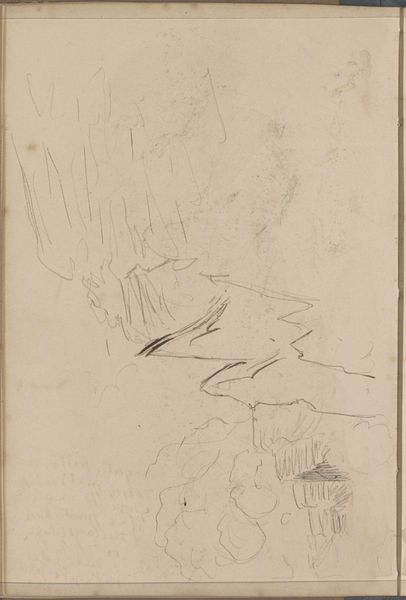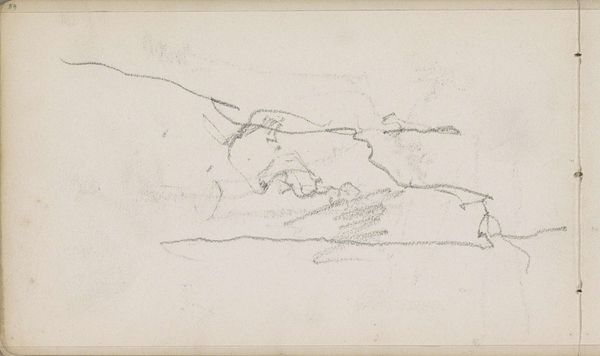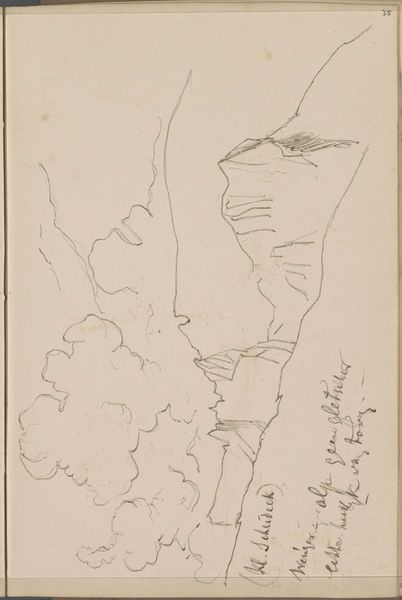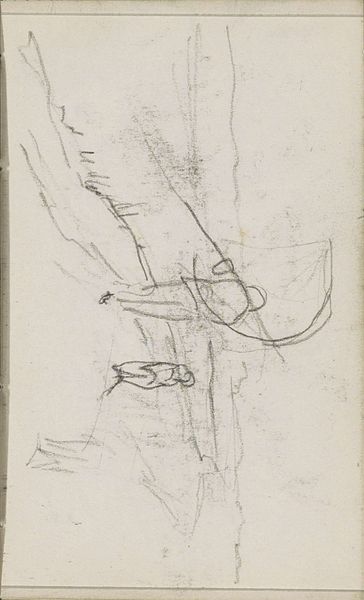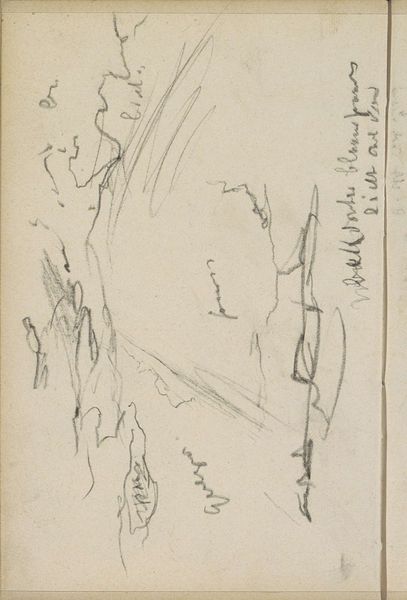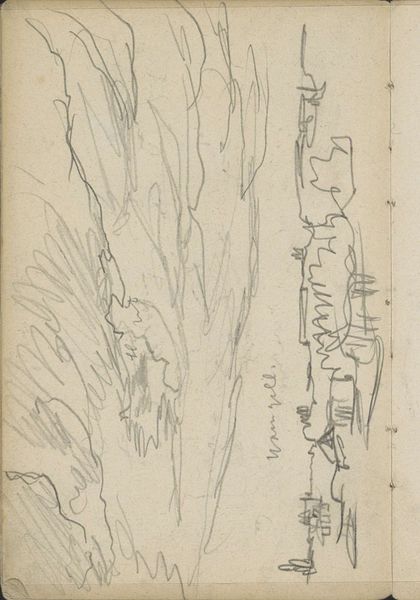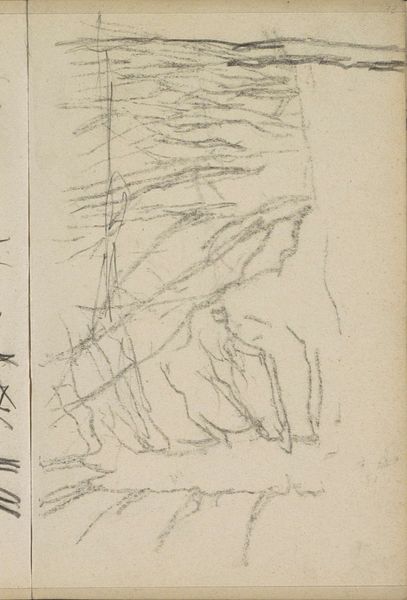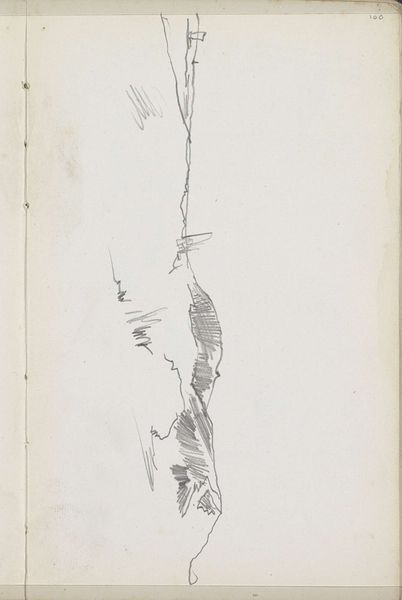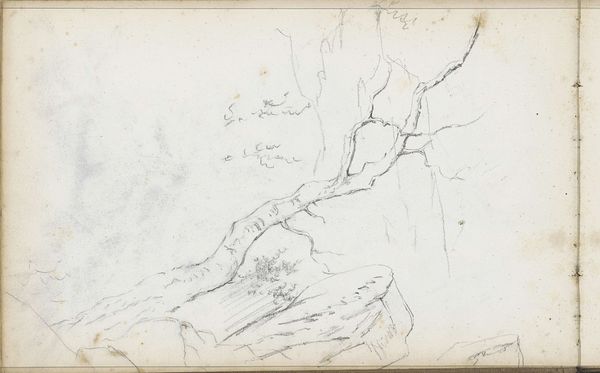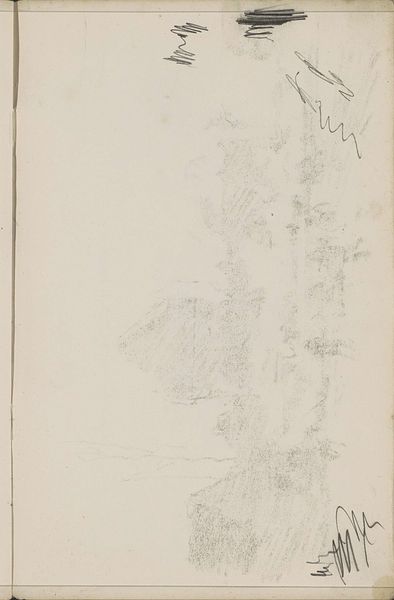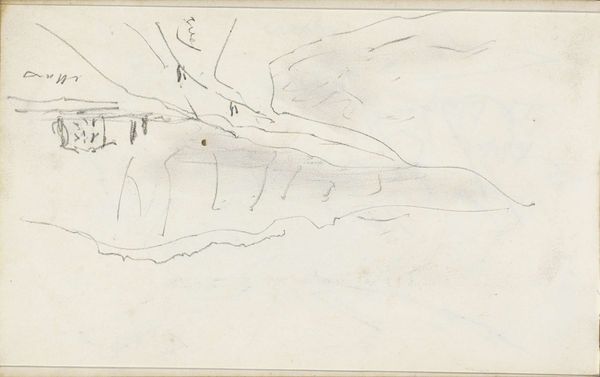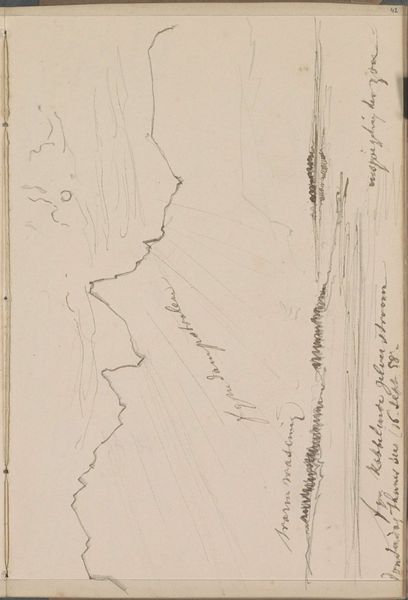
Copyright: Rijks Museum: Open Domain
This sketch of the Steinernes Meer, or "Stone Sea," was made by Johannes Tavenraat in the 19th century, likely using graphite on paper. The seeming simplicity of the materials belies the complexity of the image. The marks are rapidly made, economical, yet they speak volumes. Consider how Tavenraat has used the inherent qualities of graphite—its capacity for both delicate lines and shaded masses—to evoke the rugged texture of a mountainous landscape. Note the contrast between the solid, defined forms of the rocks and the fluid, almost ethereal quality of the surrounding space. The work's social significance lies in its depiction of nature as a site of both beauty and formidable power. Through subtle variations in line weight and shading, Tavenraat captures the interplay of light and shadow, conveying a sense of depth and scale that is truly remarkable. It’s a reminder that even the simplest of materials, when wielded with skill and sensitivity, can transcend the traditional boundaries between fine art and craft.
Comments
No comments
Be the first to comment and join the conversation on the ultimate creative platform.

